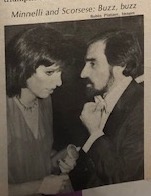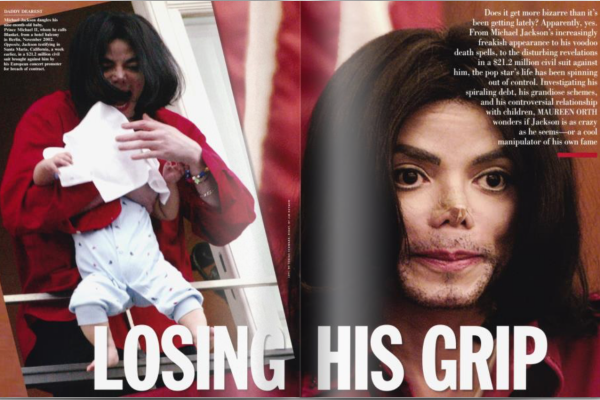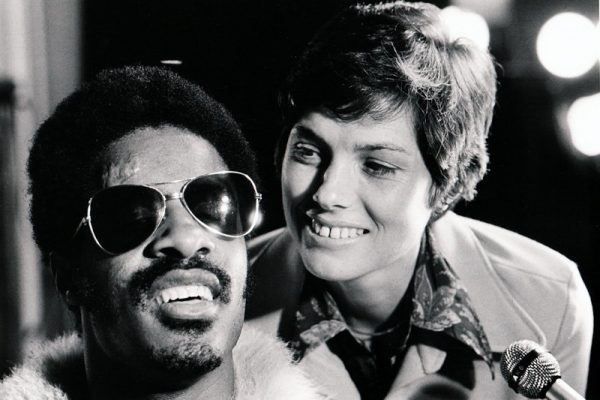Original Publication: Newsweek, September 5, 1977.
Maureen Orth with Peter S. Greenberg in San Francisco
How could it miss? The star is Liza Minnelli. The director is Hollywood’s wunderkind, Martin Scorsese (“Mean Streets,” “Taxi Driver,” “New York, New York”). The score is by John Kander and Fred Ebb of “Cabaret” fame. The book is by George Furth (“Company,” “Twigs”); the sets are by Tony Walton (“Chicago,” “Pippin”). On paper, “The Act” would seem to have all the makings of a Broadway smash. Instead, after two months of tryouts in Chicago and San Francisco, the show has been a critical disaster and a shambles of worked and reworked material. It has also, thanks to Liza Minnelli’s high-voltage presence, been a sellout.
“The Act” is now in its third title (previous names: “In Person” and “Shine It On”). Thea Van Runkle’s costumes, which were termed “sadistic” by one Chicago reviewer, have been replaced with sequined creations by Liza’s favorite designer, Halston. Songs and dance routines with their accompanying sound and light cues have been moved around. One supporting part has been tried by four different actors and at one performance in San Francisco, the actors went on with dozens of new pages of material—handed to them that day. Says supporting actor Mark Goddard: “I used to wear all black. Now I wear all white.” Says dancer Wayne Cilento: “This has been going on so long, we’ve forgotten whether we’re going forward or backward.” To date, George Furth has written twelve drafts of the book.
Fishbowl: To make things worse, this most troubled of tryouts—for which audiences have been paying Broadway prices of up to $20 a ticket—is taking place in the atmosphere of a fishbowl. For months, gossip columnists and show-business insiders have been buzzing about the rumored affair between the star and her director (who also worked together on “New York, New York”) and speculating that both of their marriages are about to crack. “Liza’s contract gives her final say on everything—including whether the director is canned,” says one production head. “People wanted Scorsese off the show; now most everyone thinks having him around is a good thing—it works better because of their relationship. It’s like she’s out there working for him. The only problem is she’s excessively loyal to her men. She loves, perhaps too blind, and that’s where she comes close to the story of the show.”
Ostensibly, Liza Minnelli plays Michelle Craig, a 31-year-old actress-singer-dancer whose movie career is on the skids. When things begin, she is seen doing the opening number of a big comeback act at a Las Vegas hotel. With little warning, the proceedings shift bewilderingly between flashbacks of Michelle’s past life—her personal and professional triumphs and failures—and the continuation of her nightclub act. During the strenuous two-and-a-half-hour performance, Liza leaves the stage for only four minutes. The rest of the time she’s giving her all to the audience with what some of them think is in fact really her own new nightclub act. “It’s been very difficult for the audience to separate Michelle Craig from Liza,” reports composer Kander. Some nights, he says, after Michelle has finished her Vegas act, they start screaming for “Cabaret.”
Work in Progress: One of the show’s problems is that Kander and Ebb conceived of the score—which most critics have dismissed as unmemorable—as a nightclub act that could be removed from the show and stand by itself. “We had to stage and perform the tunes as if the real audience would be familiar with them,” says Kander. “But the problem is that there aren’t any numbers up there that Liza’s identified with,” Another difficulty arose from Scorsese’s original notion that the music should have no relationship to the book. The two were rehearsed separately, and when they were brought together, the combination made no sense. “In a movie,” says Scorsese, “this concept is easy to handle. You just dissolve in and out. But onstage you’ve got serious transition problems.”
In Los Angeles this week, the show’s last stop before its scheduled Broadway opening on Oct. 29, “The Act” will surely go through even more changes. By the end of its run in San Francisco, however, it had improved to the point that many theater insiders felt it could be a success. “I’m treating this like a work in progress,” Scorsese insists. “We keep patching it up but we haven’t fixed it properly. Right now I feel we’ve done only two scenes properly in a foxhole,” he sighs. “I don’t think I’ll be doing a musical drama for a long time .”
This article is typed from the original material. Please excuse any errors that have escaped final proofreading.





No Comments